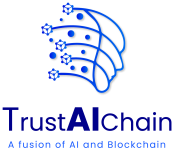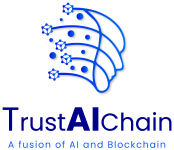Understanding the Concept of Trustlessness
At the core of blockchain technology lies the concept of a trustless system. Contrary to what the term might suggest, a trustless system doesn’t imply a lack of trust. Instead, it refers to a system without trust in a central authority or intermediary. Rather, trust is distributed across a decentralized network, where each participant can independently verify the system’s integrity.
In traditional systems, trust is often centralized, meaning that participants must rely on third parties such as banks, governments, or corporations to act as trusted intermediaries. These intermediaries are responsible for verifying identities, processing transactions, and ensuring the security and fairness of interactions. However, this centralization introduces vulnerabilities, including the risk of corruption, fraud, and single points of failure.
Conversely, blockchain eliminates the need for these intermediaries by leveraging cryptographic algorithms, consensus mechanisms, and distributed ledgers. In a blockchain system, trust is built through transparency, immutability, and decentralized validation, enabling participants to transact directly with one another without the need for a central authority.

The Role of AI in Enhancing Trust
While blockchain provides the foundational infrastructure for a trustless system, Artificial Intelligence plays a complementary role by enhancing these systems’ efficiency, security, and scalability. AI’s ability to analyze vast amounts of data, make predictions, and automate decision-making processes makes it a powerful tool for improving the functionality of blockchain-based systems.
One of the key areas where AI and blockchain intersect is in the realm of smart contracts. Smart contracts are self-executing contracts with the terms of the agreement directly written into code. They automatically enforce and execute contractual obligations when predefined conditions are met. However, the effectiveness of smart contracts relies heavily on the accuracy and reliability of the data used to trigger them. This is where AI comes into play.
AI can be used to validate and verify the data inputs for smart contracts, ensuring that they are accurate and free from tampering. For instance, in a supply chain scenario, AI algorithms can analyze data from IoT sensors to confirm that goods have been transported under the correct conditions, triggering payment through a smart contract only if all requirements are met. This integration of AI and blockchain not only automates complex processes but also enhances trust by reducing the potential for human error or manipulation.

Building Next-Generation Systems
The fusion of AI and blockchain is not merely a theoretical exercise; it is already being applied to build next-generation systems across various industries. These systems are characterized by their ability to operate autonomously, securely, and transparently without centralized oversight.
- Financial Services: In the financial sector, AI and blockchain are revolutionizing everything from payment processing to identity verification. For instance, decentralized finance (DeFi) platforms leverage blockchain to create peer-to-peer lending and trading systems without traditional banks. AI enhances these platforms by providing real-time risk assessments, fraud detection, and personalized financial advice. Together, AI and blockchain are creating a financial ecosystem that is more inclusive, efficient, and resilient.
- Healthcare: In healthcare, combining AI and blockchain transforms how patient data is managed and shared. Blockchain ensures the security and privacy of patient records by storing them in a decentralized ledger that is immutable and tamper-proof. Conversely, AI enables the analysis of this data to identify trends, diagnose diseases, and recommend treatments. This integration improves patient outcomes and addresses long-standing data breaches and unauthorized access issues.
- Supply Chain Management: Supply chains are becoming increasingly complex, involving multiple stakeholders across different regions. Blockchain provides a transparent and immutable record of every transaction and movement within the supply chain. At the same time, AI algorithms analyze this data to optimize logistics, predict demand, and identify potential disruptions. The result is a supply chain that is more efficient and more resilient to fraud, counterfeiting, and other risks.
- Government and Public Services: Governments are exploring the use of AI and blockchain to enhance the delivery of public services. For example, blockchain can be used to create secure and transparent voting systems, while AI can be employed to analyze voter data and identify fraud or voter suppression patterns. Additionally, blockchain-based identity systems can provide citizens with a secure and portable digital identity that can be used to access a wide range of services, from healthcare to education.

Challenges and Considerations
While the potential of AI and blockchain is immense, it is important to acknowledge the challenges and considerations associated with their implementation. One of the primary challenges is the need for interoperability between different blockchain platforms and AI systems. Without standardization, the full potential of these technologies cannot be realized.
Moreover, integrating AI and blockchain raises ethical and legal questions about privacy, data ownership, and the potential for bias in AI algorithms. As AI systems become more autonomous, there is also the risk of unintended consequences, where the actions of an AI system could have far-reaching impacts that its developers did not anticipate.
Finally, the scalability of blockchain remains a significant hurdle. While AI can help optimize and streamline blockchain operations, the fundamental limitations of blockchain—such as its energy consumption and transaction processing speed—must be addressed to enable widespread adoption.

The Road Ahead
As an AI Ph.D. candidate deeply immersed in AI and blockchain, I am acutely aware of these technologies’ potential and challenges. The road ahead is not without obstacles, but the convergence of AI and blockchain represents a paradigm shift in building trust in the digital age.
By decentralizing trust and automating processes, AI and blockchain are making systems more secure and efficient and empowering individuals and organizations to interact in previously unimaginable ways. As we continue to explore the possibilities of this powerful combination, it is essential that we do so with a clear understanding of the ethical, technical, and societal implications.
In summary, the fusion of AI and blockchain is more than just a technological advancement; it is a fundamental rethinking of establishing trust in a world where traditional mechanisms are increasingly inadequate. As we build next-generation systems, the role of AI and blockchain will be central to ensuring that these systems are efficient and secure but also fair, transparent, and inclusive. The future of trust, it seems, lies not in the hands of a few but in the collective power of decentralized networks and intelligent systems.







